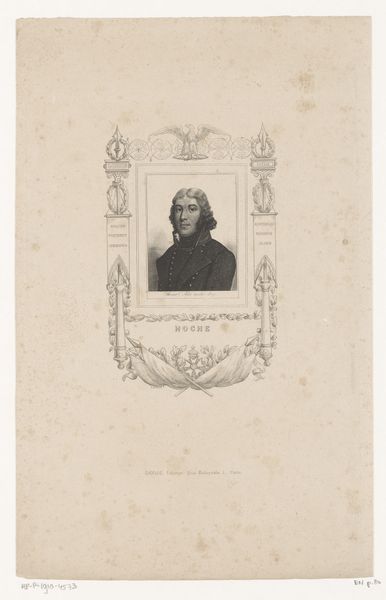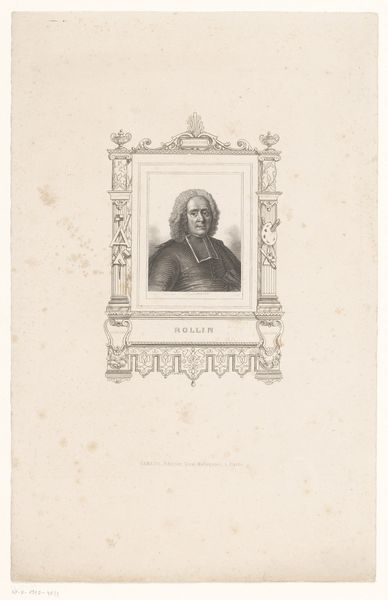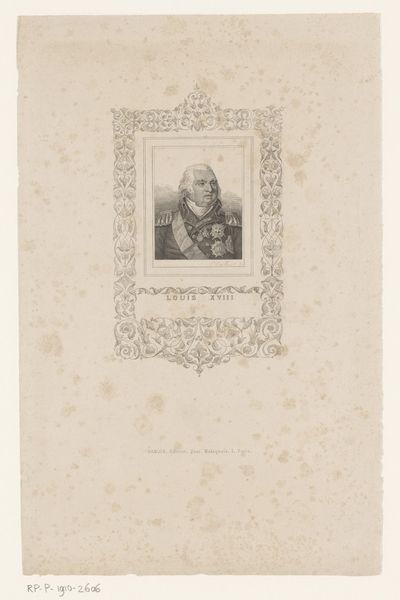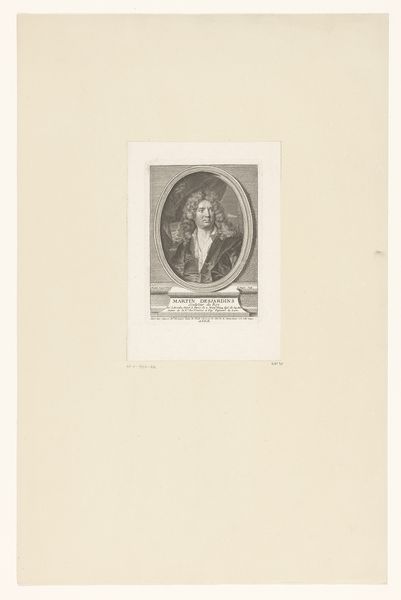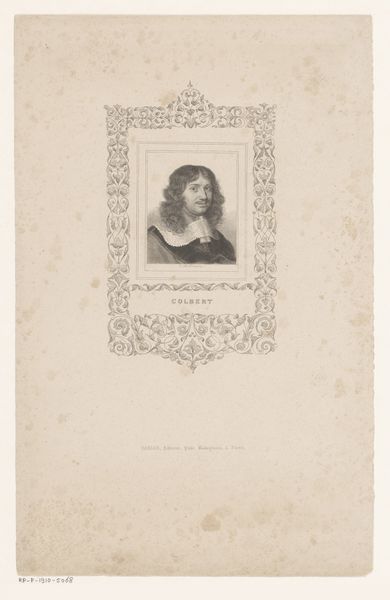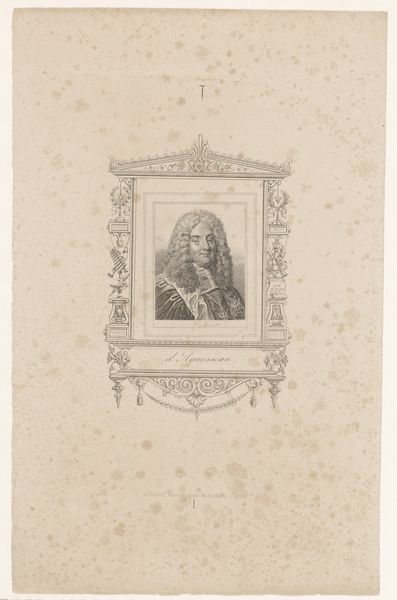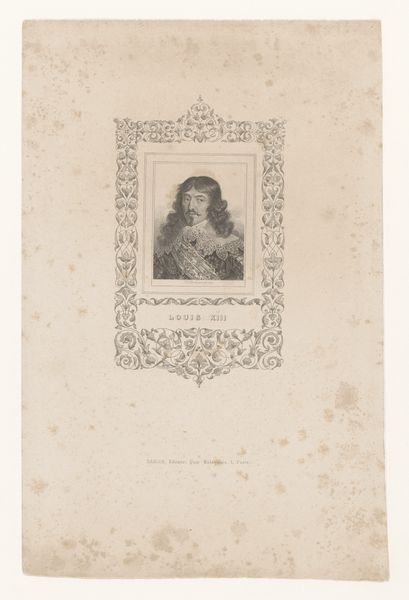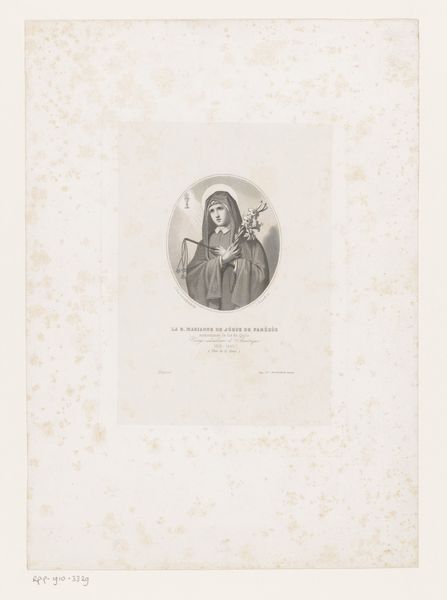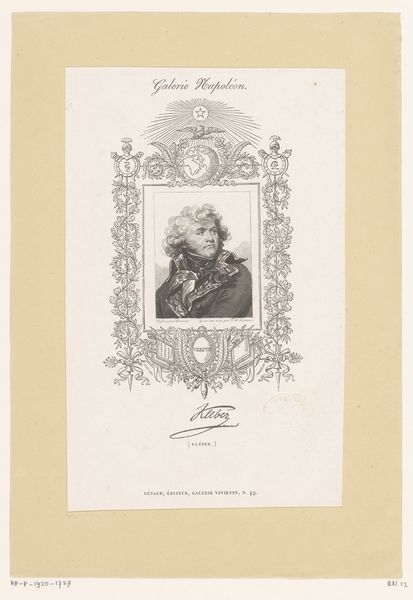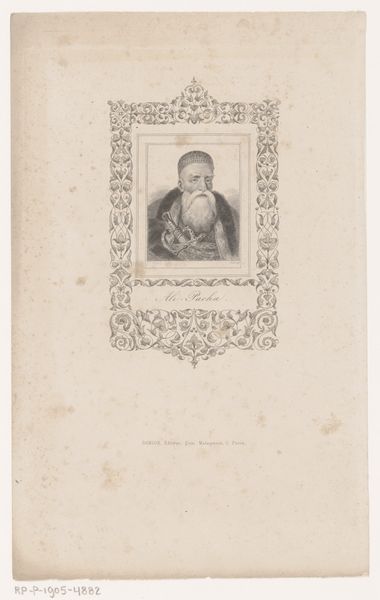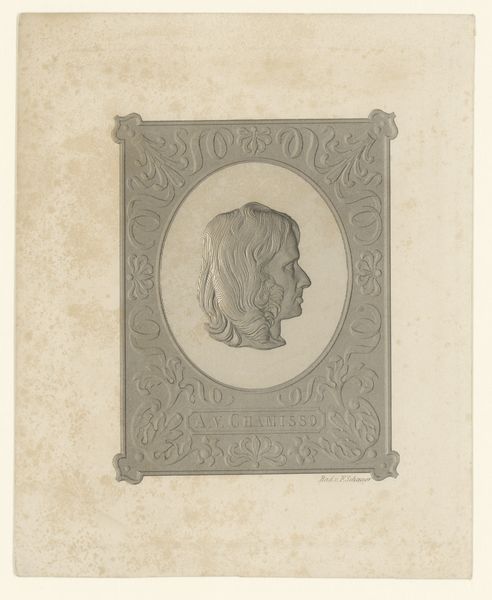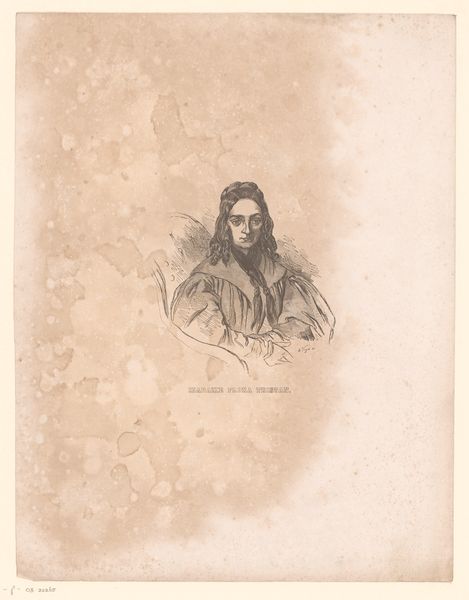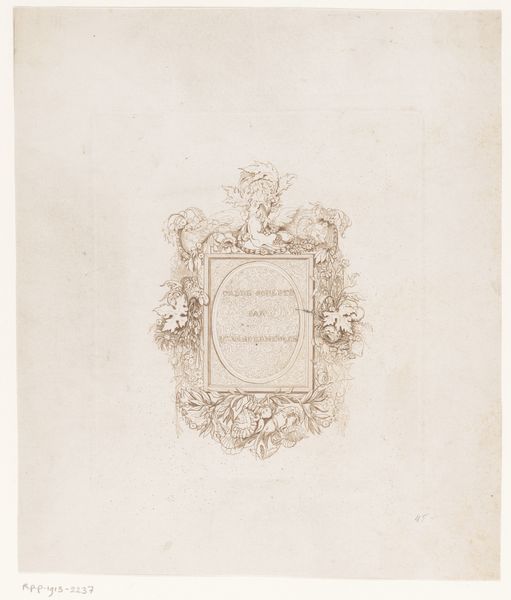
print, engraving
#
portrait
#
aged paper
# print
#
old engraving style
#
white palette
#
romanticism
#
history-painting
#
academic-art
#
engraving
#
realism
Dimensions: height 235 mm, width 151 mm
Copyright: Rijks Museum: Open Domain
Editor: Here we have an anonymous engraving from sometime between 1828 and 1870, titled *Portret van Jean Baptiste Rousseau*. It's a pretty small work on what appears to be aged paper. What strikes me most is the ornate frame around the portrait itself, it seems to both celebrate and confine the image. How do you see this piece? Curator: For me, the key lies in the production of this print. Consider the labour involved in creating an engraving – the skill of the artisan meticulously carving lines into a metal plate. Each line a deliberate act, a translation of the original portrait into a reproducible format. Think about how many prints could be made, and consumed. Editor: So you're focusing on the means of production rather than, say, the subject himself, Jean Baptiste Rousseau? Curator: Precisely. While Rousseau was a figure of importance, this print represents a wider system of cultural production. Engravings like this were a way to disseminate images, making them accessible to a broader audience. How might the paper quality and printing techniques used here reflect the socio-economic context of the time? Was this meant for mass consumption, or a more elite audience? Editor: Hmm, I guess I hadn't considered how accessible prints were at the time. Looking closer, it’s clear the quality isn't exactly top-tier. Curator: Exactly! The materials used and the level of detail suggest this was likely produced for a middle-class market, eager to consume images of notable figures. Editor: That makes sense. It's like a proto-photograph in terms of accessibility. I hadn't thought about it that way. Thanks for pointing out the impact of the materials and production process on understanding the piece. Curator: Indeed. Analyzing art through the lens of materials and their socio-economic context opens up new avenues for understanding its place in history.
Comments
No comments
Be the first to comment and join the conversation on the ultimate creative platform.
